|
Size: 238.538 km2 (slightly less than the United Kingdom).
Capital: Accra.
Number of inhabitants: 23,9 million.
Number of inhabitants per km2: 100.
Largest religious groups: Christians (69%), Muslims (16%) and supporters of traditional religions (15%).
Official language: English. Of the other languages in Ghana Twi (also called Ashanti), Ewe and Fante are spoken the most.
Largest population groups: Akan (45.3%), Mole-Dagbon (15.2%) and Ewe (11.7%).
Neighbouring countries: Togo, Burkina Faso and the Ivory Coast.
National holiday: Independence day on 6 March.
|
|
Climate: tropical, a lot of rain in the South-West, especially in May-June and October-November, fairly dry in the South-East and exceedingly dry in the North.
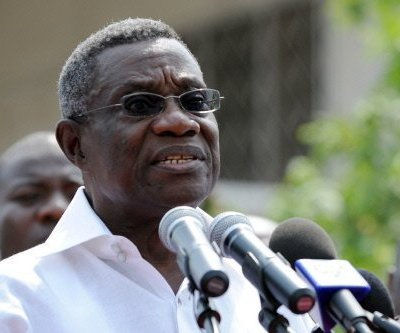 Type of state: constitutional republic with a parliamentary democracy with a president who is the head of the government as well as the head of the state and a parliament with one chamber. Ghana has the right to vote for all citizens of 18 years old and more. Every four years the Ghanaians elect a new president (and vice-president) and a new parliament. Type of state: constitutional republic with a parliamentary democracy with a president who is the head of the government as well as the head of the state and a parliament with one chamber. Ghana has the right to vote for all citizens of 18 years old and more. Every four years the Ghanaians elect a new president (and vice-president) and a new parliament.
In 2009 John Atta Mills became president
History
Around 700 in Senegal, Mauritania and Mali the kingdom Ghana came into existence. It became an important transfer point for trade from South to North. Especially gold and ivory found their way to countries in North-Africa through Ghana.
At the end of the 11th century Islamic fighters from Morocco invaded the kingdom and conquered it. After that the Akan left the area of the kingdom to go to an area on the Gulf of Guinea, that is called Ghana now. In the 15th century the Ewe and other peoples came in from the East.
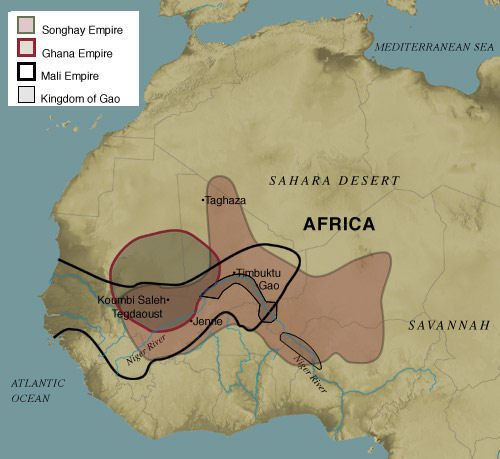
In 1471 the first Portuguese discoverers and tradesmen set foot on land in this area. They discovered that a lot of gold could be found here. Portugal established trade posts and fortresses on the coast. The area where the trade posts and fortresses were situated, was called the Gold Coast. The area would keep this name until 1957.
In the 17th century the Dutch colonists fought off the Portuguese from the Gold Coast. The Dutch did not just come here for the gold, but also for ivory, pepper, other products and for slaves. They bought slaves from the Akan, who lived on the coast (they had traded in slaves for centuries and owned slaves themselves).
Dutch trade with the Ivory Coast was in the hands of the West-Indian Company of WIC, established in 1621. Colonists from England and France, amongst other countries, tried to get their hands on a part of the trade with the Gold Coast. A system of triangular trade arose. Weapons, clothes and other goods in their turn went to the Gold Coast from Europe.
There, they were exchanged for slaves and other products. These were transported to South America and the Caribbean in exchange for salt, coffee, sugar, cotton and other products, which found their way to Europe. The Netherlands dominated the very lucrative transatlantic slave trade.
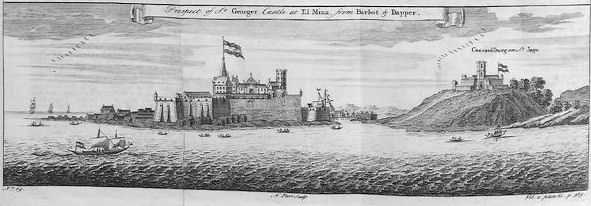
Transatlantic trade was not profitable anymore after the abolition of the slavery. For this reason, in 1872 the Netherlands sold all their possessions on the Gold Coast to England. In 1885, the Gold Coast became a British Crown colony. Later, the territory governed by Britain was expanded by the annexation of protectorates, until it took the shape of present-day Ghana. This territory mainly supplied cocoa and gold to the motherland. 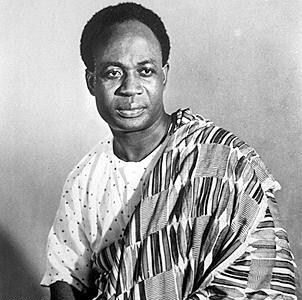
The motherland sold its industrial products to the Gold Coast at high prices. The population of the colony did not earn much money and had to pay a lot for those products from Britain. They revolted against this. Also, an increasing number of the people wanted self-government. In 1947, the Ghanaians went on copper strike. They refused to buy any more imported products. Under the leadership of Kwame Nkrumah, more protest actions took place, for instance, education strikes.
In 1957, Britain handed over its sovereignty over the Gold Coast and the protectorates to the government of this novel construction. Thus, a new country was born. Nkrumah gave this new country the name of the kingdom that had encompassed Senegal, Mauritania, and Mali: Ghana. He became the country’s first president. He carried out a socialist policy and established a state-run economy. He was confronted with the resistance of population groups which were of the opinion that they did not get to share in the wealth, and with corruption. In 1966, soldiers brought about his fall. This led to several short-term changes in political power.
In 1979, Jerry Rawlings seized power, but after a while, he resigned. Two years later, he seized power for a second time and continued to rule the country. At first, the Ghanaian economy deteriorated. Rawlings asked the World Bank and the IMF for money to tackle this problem. He only received it when he introduced a free market system in Ghana. This money stimulated economic growth.
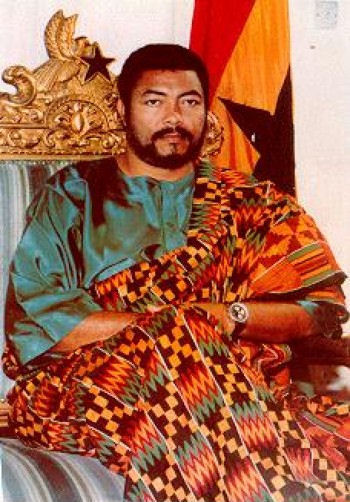 On 28 April 1992, Rawlings approved of a new constitution for Ghana. This turned the country into a democracy. Since then, Ghana has had a stable government, allowing population groups to live side by side in peace, in spite of ancient feuds and differences in welfare, whereas elsewhere in Africa, population groups often fight each other and coups are committed. Yet in 1994, a civil war broke out in the north of the country, the Guinea-Fowl War. On 28 April 1992, Rawlings approved of a new constitution for Ghana. This turned the country into a democracy. Since then, Ghana has had a stable government, allowing population groups to live side by side in peace, in spite of ancient feuds and differences in welfare, whereas elsewhere in Africa, population groups often fight each other and coups are committed. Yet in 1994, a civil war broke out in the north of the country, the Guinea-Fowl War.
Production and trade
International trade relations:
Ghana is a member of the African Union, the African counterpart of the European Union. Moreover, Ghana is a member of a number of other production, agriculture and international trade organizations:
- Economic Community of West African States of ECOWAS
- Food and Agriculture Organisation (FAO/United Nations)
- Union of African States
- International Monetary Fund
- UNCTAD
- World Trade Organization WTO
 ECOWAS ECOWAS
Ghana exports most of its products to EU member states the Netherlands, England, France, Germany, Belgium and the United States.
Ghana mainly imports products from Nigeria, China, England and the United States. Of these four countries, only one is an EU member. Trade with China in particular has grown explosively.
Rich in raw materials, yet poor:
Ghana is rich in raw materials. Particularly the exports of gold, hardwood, diamonds and bauxite generate a lot of income. The Volta river flows through the country. In the Volta river, a dam and power plant have been constructed. The power station supplies a large part of the country with energy.
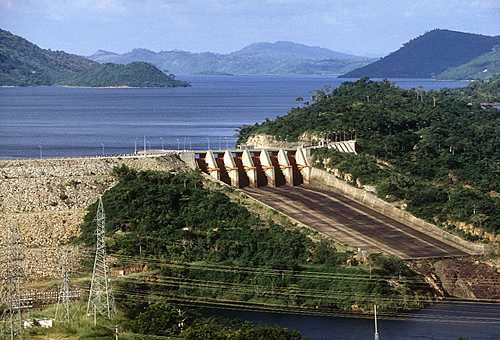
Hydroelectric power plant in the Volta River
But there is a large gap between rich and poor and poverty is widespread. With regard to these aspects, the situation in many African countries is worse, but still, many Ghanaians are forced to get by on less than one euro a day. Also, Ghana is highly dependent on foreign financial support. A large source of income comes from transfer expenditures. More than two million Ghanaians have moved abroad, for instance to the UK. They send a part of their income to family members who they have left behind in Ghana.
The central role of agriculture:
More than half of the population earns its living from agriculture. Also, agriculture accounts for more than one third of the Gross Domestic Product. Agriculture mainly takes place in the Southwest of the country, which has the wettest climate, so that crops can be grown throughout the year. In the North, there is no rain at all from January until March.
In this part of Ghana and in the Southeast of the country, people make their living through (extensive) livestock farming. Here you will find buffaloes, bovines and zeboes. However, bovine farming, the production of beef and the beef trade are suffering from competition. Ghana imports large amounts of cheap beef which is dumped onto the world market by the European Union (=sold at especially low prices). There used to be a large number of butcheries where bovines were slaughtered and a lively trade in beef produced in Ghana itself. The cheap beef imports from Europe have put an end to this.
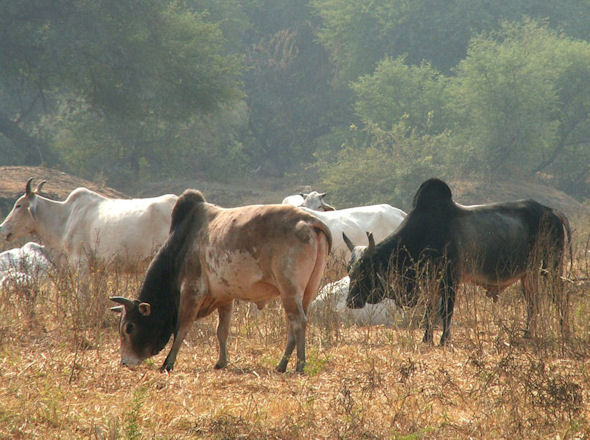
The majority of the food produced for the domestic market is cultivated by small peasants who sometimes manage to get by on the production of their fields, but sometimes they do not. They often use traditional tools. Not only the farmers themselves work hard in the fields; their wives and children provide assistance, especially when the harvest is taken. Traditional Ghanaian crops include yam (a kind of carrot), cassava, peanuts and rice.
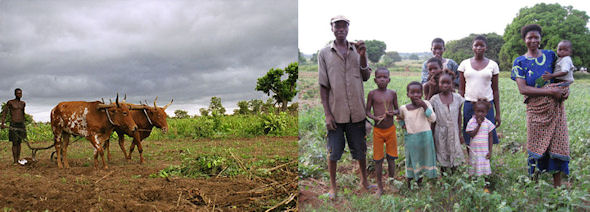 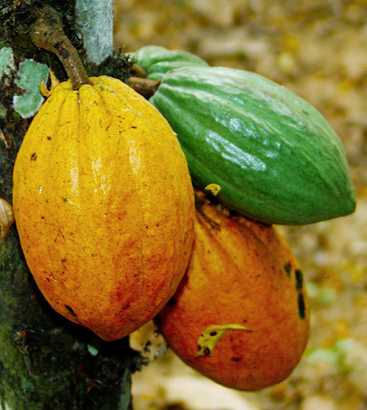
In addition, the following export crops are grown: cocoa, bananas and various horticultural products. Cocoa is special among these. It is Ghana’s most important agricultural product, even the most important of all export products. Moreover, it is not produced on plantations where people work to serve the owners, but by small farms in or around the villages. Working the crops and harvesting them is done by the cocoa farmers themselves.
Cotton also used to be one of Ghana’s important export crops. It was mainly cultivated in the North of the country. Then the European Union and the United States put large quantities of cotton on the global market at prices kept artificially low on behalf of their own cotton industry. The cotton price on the global market collapsed to the extent that Ghanaian cotton farmers decided to stop growing cotton.
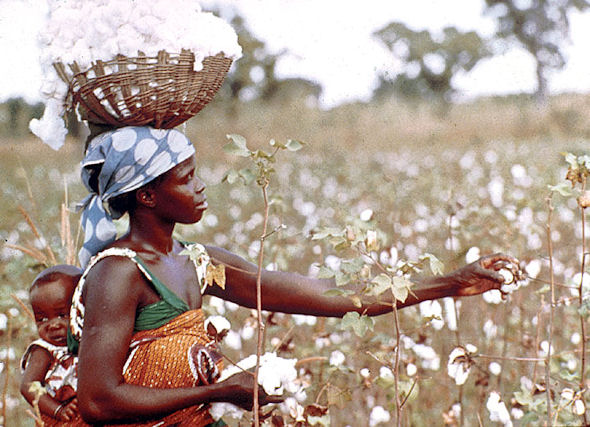
The North of the country also used to supply tomatoes on a large scale. But since the introduction of market liberalization, production has plummeted.
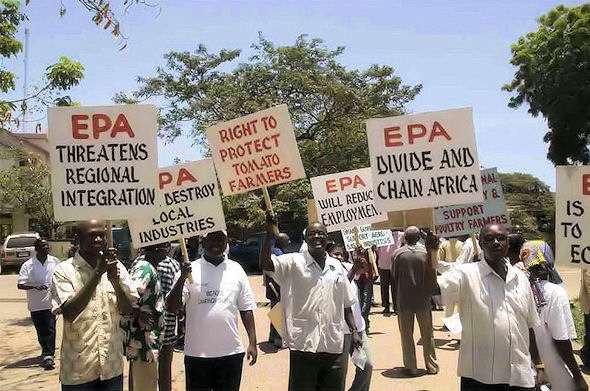
Market liberalization does not make everyone happy
Politics and economy
Until after the democratization of the nation’s government in 1992, the Ghanaian economy was a state economy. Following Ghana’s independence in 1957, English companies withdrew from the country. As a result, food processing- and other industries were increasingly dismantled. As a dictator in the 80s, Rawlings had already started the process of privatization and the introduction of the free market. He continued these as a democratically elected president (1992-2000). His liberal successor John Kufuor (2000-2008) continued and strengthened this policy. Thus, he intended to encourage foreign companies to invest in Ghana.
An example of privatisation is the cocoa trade. Ever since its introduction into Ghana in 1880, cocoa has become increasingly important to the Ghanaian economy. Since the country’s independence in 1957, it has actually become the backbone of the economy. No less than one third of the income from exports comes from cocoa. In the past, cocoa farmers received a guaranteed price for their harvest. This price was fixed by the Cocoa Marketing Board in negotiation with the farmers. Dealers paid the farmers this fixed price. This changed in the late ‘90s. At the insistence of the IMF and the World Bank, the Ghanaian cocoa trade was liberalized. This gave farmers and corporations the liberty to sell cocoa to other parties (companies) than dealers.
|



 Type of state: constitutional republic with a parliamentary democracy with a president who is the head of the government as well as the head of the state and a parliament with one chamber. Ghana has the right to vote for all citizens of 18 years old and more. Every four years the Ghanaians elect a new president (and vice-president) and a new parliament.
Type of state: constitutional republic with a parliamentary democracy with a president who is the head of the government as well as the head of the state and a parliament with one chamber. Ghana has the right to vote for all citizens of 18 years old and more. Every four years the Ghanaians elect a new president (and vice-president) and a new parliament.


 On 28 April 1992, Rawlings approved of a new constitution for Ghana. This turned the country into a democracy. Since then, Ghana has had a stable government, allowing population groups to live side by side in peace, in spite of ancient feuds and differences in welfare, whereas elsewhere in Africa, population groups often fight each other and coups are committed. Yet in 1994, a civil war broke out in the north of the country, the Guinea-Fowl War.
On 28 April 1992, Rawlings approved of a new constitution for Ghana. This turned the country into a democracy. Since then, Ghana has had a stable government, allowing population groups to live side by side in peace, in spite of ancient feuds and differences in welfare, whereas elsewhere in Africa, population groups often fight each other and coups are committed. Yet in 1994, a civil war broke out in the north of the country, the Guinea-Fowl War. ECOWAS
ECOWAS








